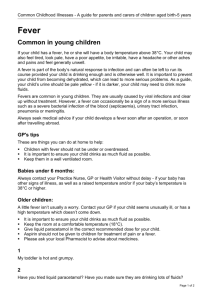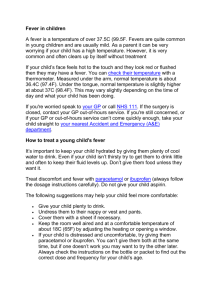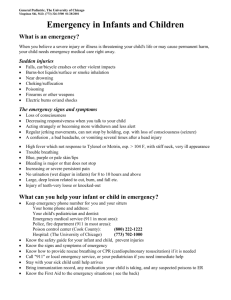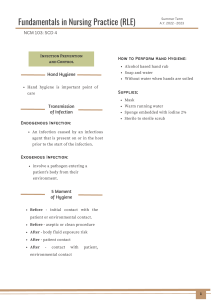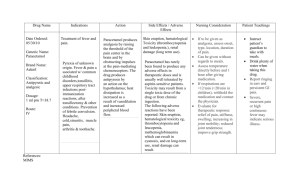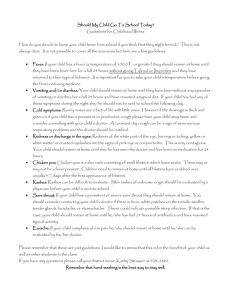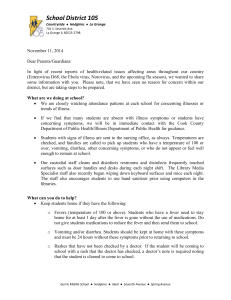Caregiver advice for upper respiratory infection and fever
advertisement
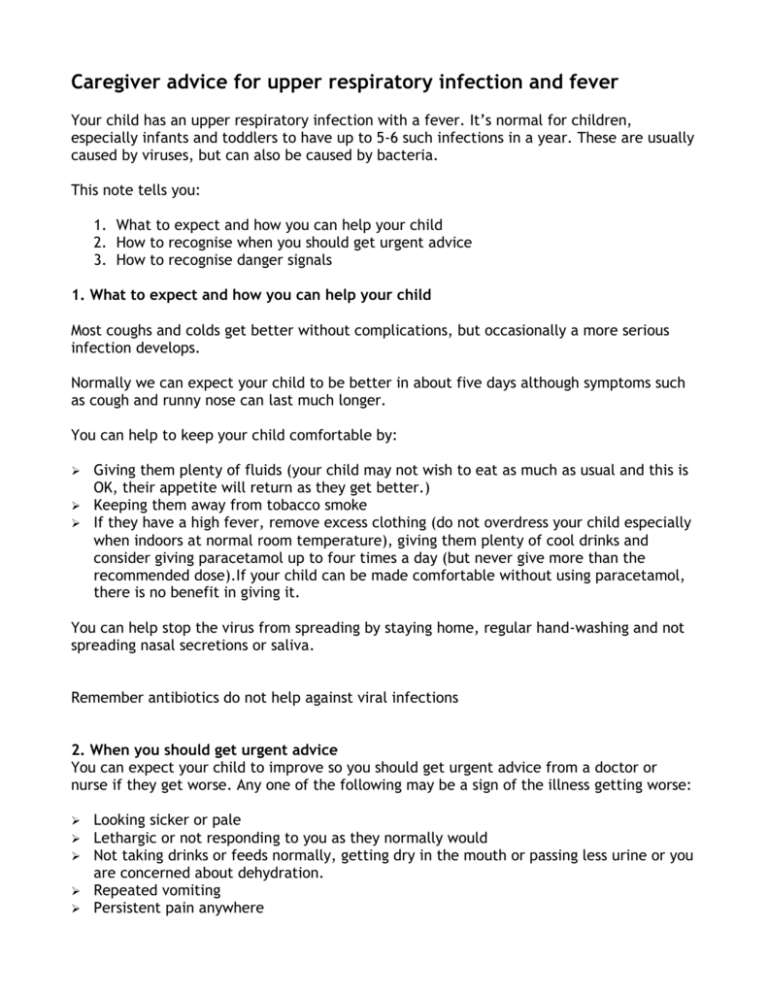
Caregiver advice for upper respiratory infection and fever Your child has an upper respiratory infection with a fever. It’s normal for children, especially infants and toddlers to have up to 5-6 such infections in a year. These are usually caused by viruses, but can also be caused by bacteria. This note tells you: 1. What to expect and how you can help your child 2. How to recognise when you should get urgent advice 3. How to recognise danger signals 1. What to expect and how you can help your child Most coughs and colds get better without complications, but occasionally a more serious infection develops. Normally we can expect your child to be better in about five days although symptoms such as cough and runny nose can last much longer. You can help to keep your child comfortable by: Giving them plenty of fluids (your child may not wish to eat as much as usual and this is OK, their appetite will return as they get better.) Keeping them away from tobacco smoke If they have a high fever, remove excess clothing (do not overdress your child especially when indoors at normal room temperature), giving them plenty of cool drinks and consider giving paracetamol up to four times a day (but never give more than the recommended dose).If your child can be made comfortable without using paracetamol, there is no benefit in giving it. You can help stop the virus from spreading by staying home, regular hand-washing and not spreading nasal secretions or saliva. Remember antibiotics do not help against viral infections 2. When you should get urgent advice You can expect your child to improve so you should get urgent advice from a doctor or nurse if they get worse. Any one of the following may be a sign of the illness getting worse: Looking sicker or pale Lethargic or not responding to you as they normally would Not taking drinks or feeds normally, getting dry in the mouth or passing less urine or you are concerned about dehydration. Repeated vomiting Persistent pain anywhere Breathing rapidly New lump or swelling Bile-stained vomiting (green or yellow in colour) Very high fever (eg >39 degrees C) Not improving after a few days 3. Danger signals The following are danger signs. Dial 111 or contact a doctor immediately if your child has any of the following: Mottled, greyish or bluish skin Drowsy, floppy or difficult to wake Grunting or very rapid breathing or other breathing difficulty An unusual skin rash Severe headache or neck pain Light hurting his or her eyes Fit or convulsion Appears to you to be very ill Healthline is available for free, confidential health advice 24 hours a day. Healthline nurses do not diagnose over the phone but will assess the situation and provide advice as to the best course of action. Call 0800 611 116 from either a landline or a mobile phone. Your child may need a further check up Your Doctor or Nurse may want to check your child even if things appear to be going as expected. If you have been advised to have a check up, write the details here: Check up time and date: At the following location: Name of person doing the check up: Phone number: For more information visit http://www.kidshealth.org.nz/

